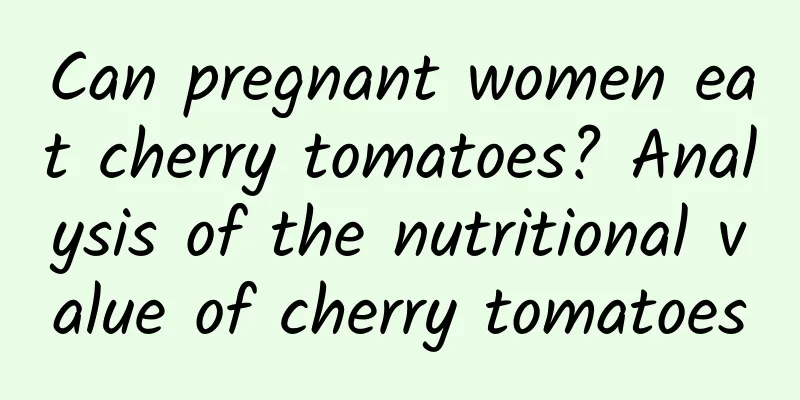How to store peaches

|
How much do you know about the storage method of peaches? Let me introduce this question to you. How to keep peaches freshControlled atmosphere storage: Controlled atmosphere storage is commonly known as CA storage. It uses a closed storage with mechanical refrigeration and equipped with a gas-controlled device and refrigeration equipment to maintain a certain low oxygen, low temperature, suitable carbon dioxide and humidity in the storage, and promptly discharge the harmful gases generated in the storage, thereby effectively reducing the respiration rate of the stored fruit, so as to delay the ripening effect and extend the shelf life. Before the red peaches are put into storage, it is necessary to carefully check whether the functions of various equipment in the gas-controlled storage are intact and whether they are operating normally, and to eliminate various faults in time. Start the refrigerator, and the temperature in the storage can only be put into storage after it drops to 0℃; at the beginning of storage, start the nitrogen generator and carbon dioxide remover to quickly reduce oxygen and remove carbon dioxide respectively, so that the temperature and gas composition in the storage gradually stabilize to the appropriate indicators for long-term storage. The changes in temperature, oxygen and carbon dioxide concentrations in the warehouse should be measured once or twice a day to understand their changing patterns and strictly control them. The inspection and testing work in the middle and late stages should be carried out carefully and regularly to prevent malfunctions of various facilities in the warehouse. Before the peaches are shipped out, all gas conditioning equipment should be stopped, and the door should be opened slightly to slowly increase oxygen. After 2 to 3 days, the gas composition in the warehouse gradually returns to the atmospheric state before the staff can enter the warehouse to operate. At present, the generally recommended commercial gas conditioning refrigeration conditions are 0℃ and 1% oxygen + 5% carbon dioxide or 2% oxygen + 5% carbon dioxide. Regular inspections should be carried out after storage. Red flat peaches stored for a short period of time should be observed once a day, and medium- and long-term fruits should be inspected once every 3 to 5 days. Peaches should be stored at variable temperaturesFluctuating temperature has a good effect on slowing down the chilling injury of red peaches stored at low temperatures, maintaining the flavor of the fruit and the texture of the flesh. The low temperature injury of red peaches is caused by the storage conditions that are conducive to the accumulation of acetic acid. The reason why variable temperature storage can reduce the occurrence of low temperature injury is that it promotes the volatilization of some volatile substances such as acetic acid and inhibits respiration. The fluctuating temperature index is preferably below 3°C, and exceeding 4°C will cause the fruit to brown and rot. The temperature fluctuation in the early stage of storage has a greater impact on the red peach fruit, and the fluctuation effect in the later stage is smaller. During the variable temperature storage process, the hardness of the fruit gradually decreases, and the soluble solids show a gradual upward trend; while in constant temperature storage, the fruit is prone to "re-ripening". This is because the hardness of the fruit depends on the balance of the activity of pectinesterase (PE) and polygalacturonase (PG) that determine the state of pectin. Long-term low temperature will also cause PE to inactivate, and the fruit cannot ripen. Pantao should be stored under reduced pressureThe air in the warehouse is extracted by a vacuum pump, the air pressure in the warehouse is controlled below 13.3kPa, and low temperature and high humidity are configured. The low-pressure air is then circulated, so that the red peaches can continuously get fresh, humid, low-pressure, low-oxygen air. Generally, the air is ventilated 4 times every hour, which can remove the field heat, respiratory heat and ethylene, carbon dioxide, acetaldehyde, ethanol, etc. produced by metabolism, so that the red peaches are in the best dormant state. Not only the moisture in the fruit is preserved, but also the consumption of nutrients such as vitamins, organic acids and chlorophyll is reduced. At the same time, the storage period is much longer than that of general cold storage, the product freshness index is greatly improved, and the shelf life after leaving the warehouse is also significantly extended. Transportation of peachesAlthough the transportation time is shorter than the storage time, the transportation temperature should be kept low. The suitable transportation temperature is 1℃~2℃, preferably not more than 12℃. Before transportation, it must be pre-cooled before loading. Peaches are packed in plastic bags, and the spontaneous atmosphere control effect is also ideal. |
<<: Pest and disease control methods for peaches
>>: How to make donkey hide gelatin candied dates
Recommend
How is Sony Bank? Sony Bank reviews and website information
What is Sony Bank? Sony Bank is a commercial bank ...
What is the reason for hollow lettuce? Can you eat hollow lettuce?
Many people in life find that the lettuce they bo...
What is Public Service Enterprise Group like? Public Service Enterprise Group reviews and website information
What is the website of Public Service Enterprise G...
The benefits of drinking pork rib soup
Pork rib soup is a kind of health-preserving soup...
How to soak longan peel in water? The efficacy and function of soaking longan peel in water
Usually, many people do not throw away the peeled...
How to make delicious enoki mushrooms? Tips on how to make enoki mushrooms
Flammulina velutipes is a kind of mushroom with h...
The benefits of eating blackcurrant for women
Black currant is a delicious berry. When ripe, it...
The efficacy and function of longan shell The medicinal value of longan shell
Have you ever paid attention to the longan shell?...
How to grow camellia? Precautions for growing camellia
Camellia is a beautiful ornamental plant with var...
Can bamboo shoots be eaten with white radish? Is it good to eat bamboo shoots and white radish together?
Bamboo shoots can be eaten together with many foo...
Carrot storage and nutritional content
Carrots are very nutritious. I heard that they ar...
How to make salted egg yolk roast duck porridge
How much do you know about the recipe of Salted E...
The difference between yellow rice and millet and the nutritional value of yellow rice
Millet and yellow rice are both common rice ingre...
What is Univision.com like? Univision.com review and website information
What is Univision.com? Univision.com is the larges...
The efficacy and function of ginger and red dates water, who should not drink ginger and red dates water
Ginger and red dates are a pair of pear-scented a...









